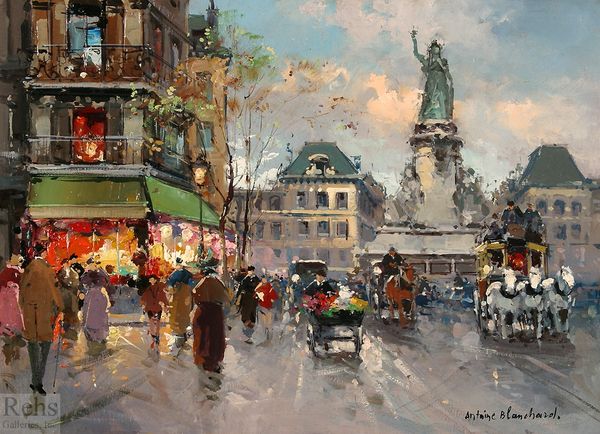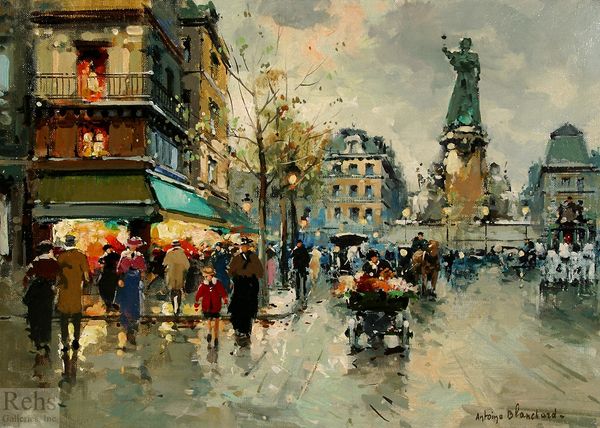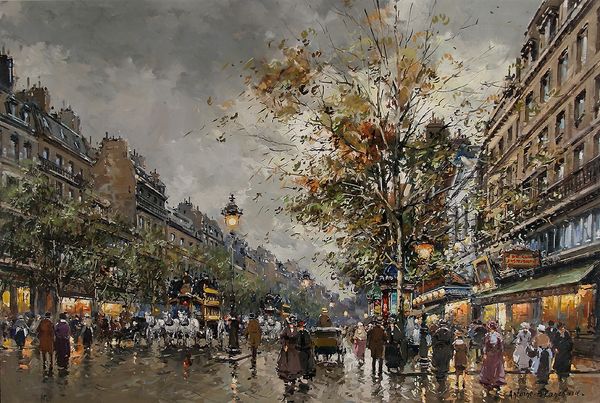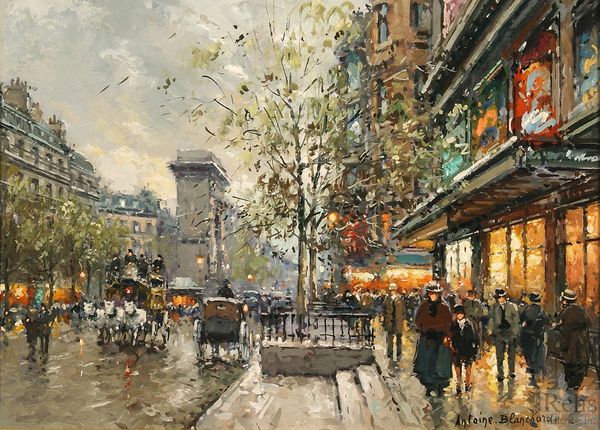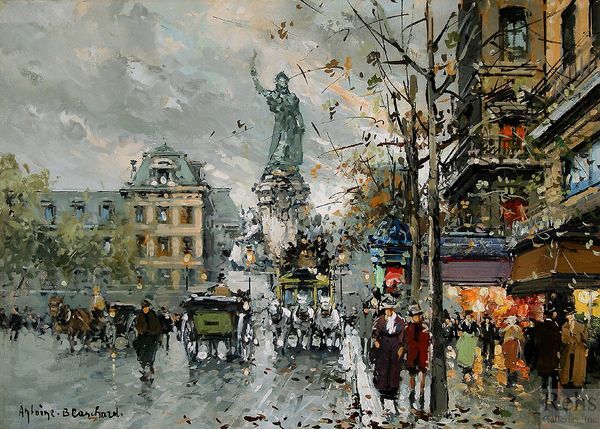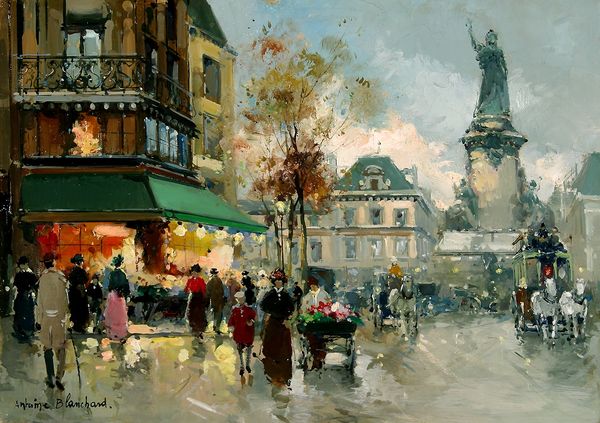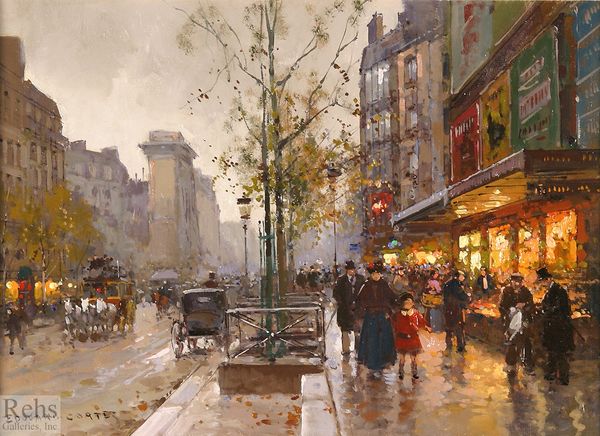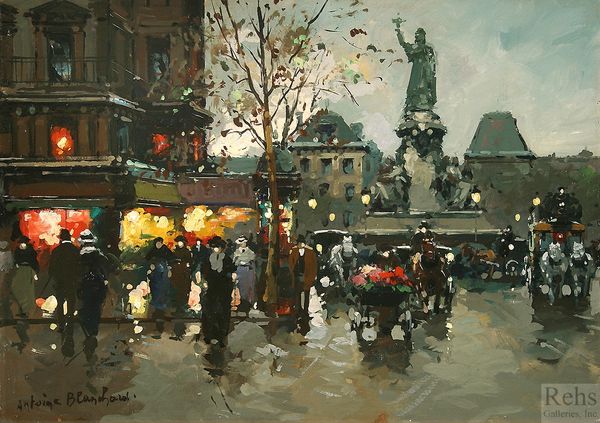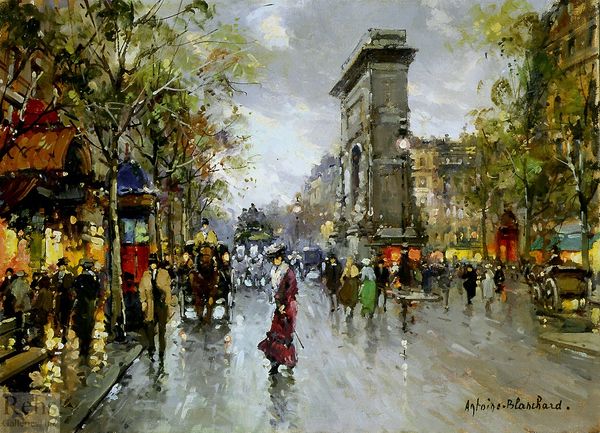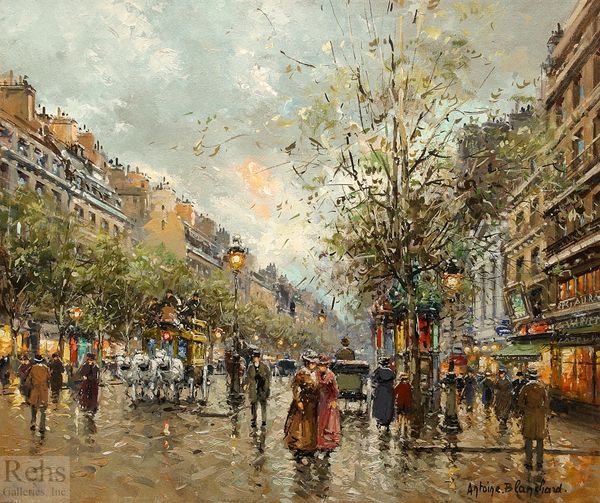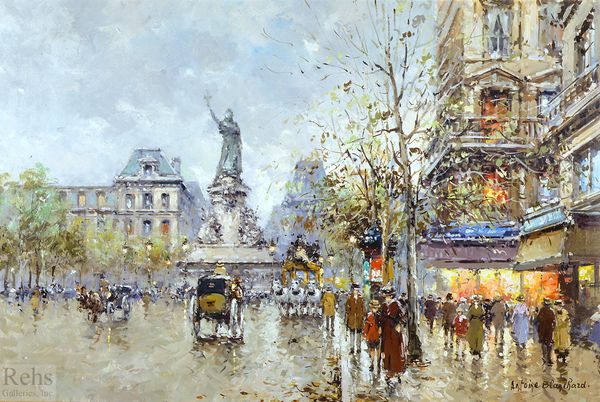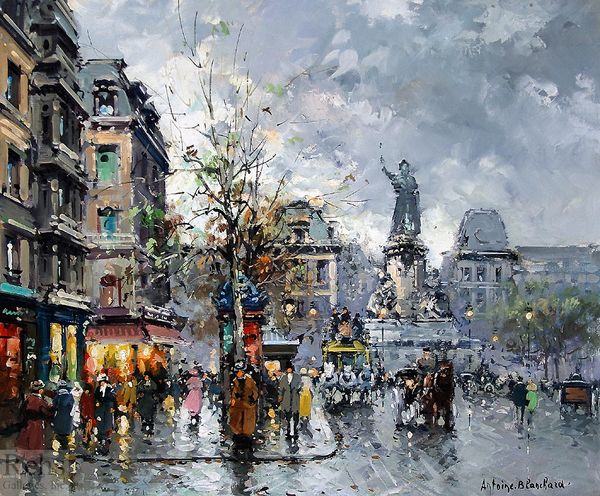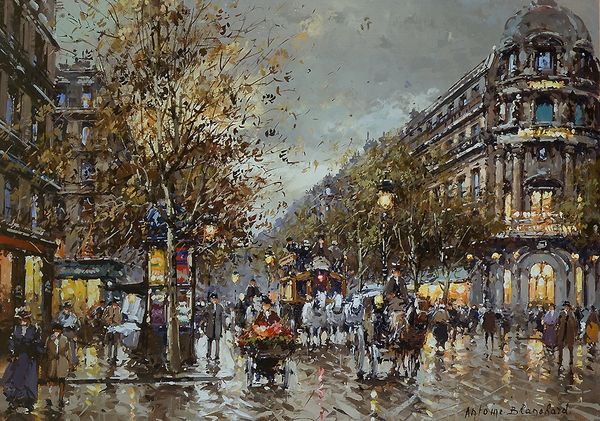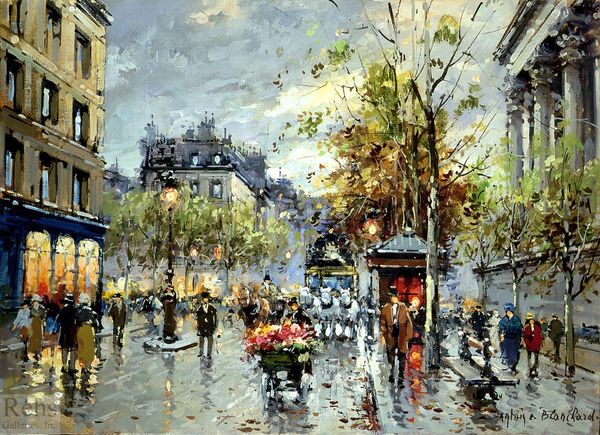
plein-air, oil-paint, photography
#
portrait
#
tree
#
impressionism
#
plein-air
#
oil-paint
#
landscape
#
urban cityscape
#
impressionist landscape
#
figuration
#
photography
#
oil painting
#
city scape
#
cityscape
#
building
Copyright: Antoine Blanchard,Fair Use
Curator: We’re looking at "Place de la Republique," an oil painting possibly by Antoine Blanchard. There's no firm date listed, which often happens with impressionistic street scenes. What are your immediate impressions? Editor: Immediately, it evokes a feeling of movement and industry—the wet cobblestones, the busy figures blurred together. It's all about the energy of urban life, seen through the lens of fleeting moments. You can almost smell the rain. Curator: The materiality definitely informs the painting's impact. Note how the quick brushstrokes capture the ephemeral quality of light on wet surfaces. But it's also worth considering what "Place de la Republique" represented symbolically. In France, the Republic itself stands for values like liberty, equality, and fraternity, so portraying it in such a public space means tapping into those ideals. Editor: True. And think about the conditions of production here: plein-air painting capturing fleeting light. It connects to a much broader market driven by new industrialized materials that allow artists to leave their studios more easily. Plus the fashion, carriages, and consumer goods on display speak volumes about this era's material culture. Curator: Indeed, fashion acts as an identity marker but also connects to evolving industrial processes that accelerate the cycles of change and consumption. Even that column in the distance functions as an emblem, its height signaling national strength and permanence. Blanchard presents Paris as more than just bricks and mortar; it's a landscape freighted with meaning. Editor: It’s about seeing not only the painting’s artistic genesis but also understanding its connection to urban growth, material innovations and consumer culture that were redefining European society. Curator: Yes, the painting reveals cultural memory and continuity—even as modernity sweeps everything away. It shows how those values are reflected or embodied, if ever so fleetingly. Editor: So while the impressionistic style draws us into a specific moment, that moment is inherently shaped by its material conditions and broader symbolic landscape. It really does bridge aesthetic experience with the underlying framework of societal development.
Comments
No comments
Be the first to comment and join the conversation on the ultimate creative platform.
